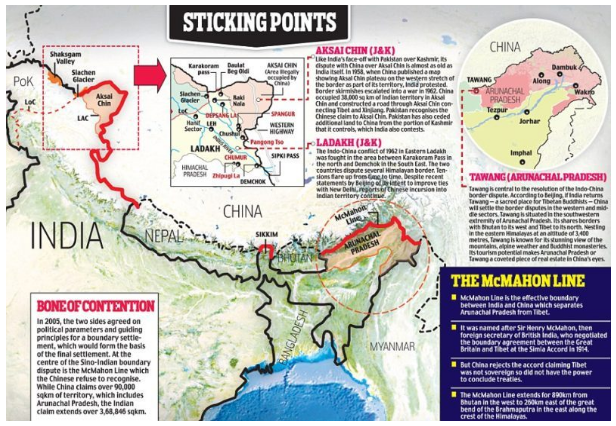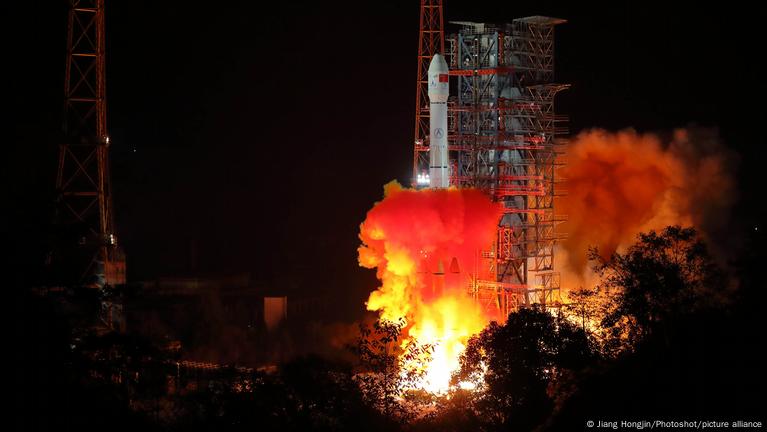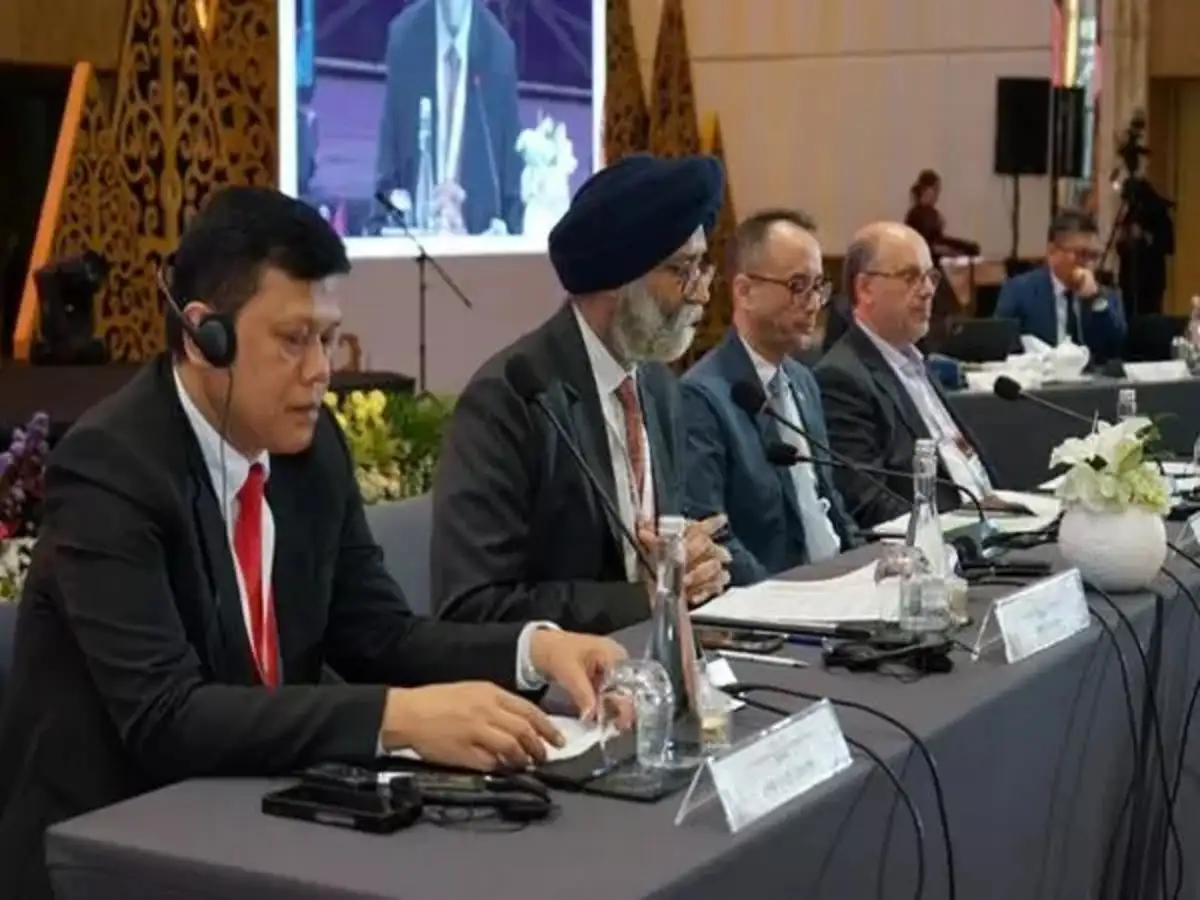- Courses
- GS Full Course 1 Year
- GS Full Course 2 Year
- GS Full Course 3 Year
- GS Full Course Till Selection
- Online Program
- GS Recorded Course
- NCERT (Recorded 500+ Hours)
- Polity Recorded Course
- Geography Recorded Course
- Economy Recorded Course
- AMAC Recorded Course
- Modern India, Post Independence & World History
- Environment Recoded Course
- Governance Recoded Course
- Science & Tech. Recoded Course
- International Relations and Internal Security Recorded Course
- Disaster Management Module Course
- Ethics Recoded Course
- Essay Recoded Course
- Current Affairs Recoded Course
- CSAT
- 5 LAYERED ARJUNA Mentorship
- Public Administration Optional
- ABOUT US
- OUR TOPPERS
- TEST SERIES
- FREE STUDY MATERIAL
- VIDEOS
- CONTACT US
India-China Partnership for Global Harmony
India-China Partnership for Global Harmony
08-11-2023

Context
Recently, China has released a white paper titled "A Global Community of Shared Future: China's Proposals and Actions" to tackle the challenges and opportunities of the 21st century.
Key Vision Points for the Global Community of Shared Future
- Economic Globalization and Inclusivity: The goal is to promote economic globalization by fostering an open world economy that benefits developing nations, avoiding unilateralism, protectionism, and zero-sum games.
- Peace, Cooperation, and Development: The text encourages a focus on peace, development, cooperation, and mutual benefits, avoiding colonialism and hegemony, and promoting joint global efforts for peace and contribution.
- Global Community of Shared Destiny: The goal is to establish a global community of shared destiny, fostering mutual respect, equity, and beneficial cooperation for deeper global partnerships.
- Genuine Multilateralism and Fair International System: The advocate advocates for a fair, UN-centered international system, upholding international law as the basis for global norms and order, and promoting true multilateralism.
- Promotion of Common Human Values: Promoting equity, justice, democracy, and freedom without imposing a single model, embracing harmony amidst diversity, and respecting each nation's right to choose its social systems and development paths
How can India and China Cooperate in Building a Global Community with a Shared Future?
-
About:
- China and India, two ancient Asian civilizations that have coexisted for thousands of years, have similar ideas on the future and fate of humanity.
- Their Oriental wisdom and civilizational legacy provide them the obligation, talent, and chance to lead by example for the rest of the world.
- Since ancient times, the Chinese people have held dear the idea of "a world of fairness and justice for the common good."
- The Sanskrit phrase "Vasudhaiva Kutumbakam," which translates to "the world is one family," is also found in ancient Indian literature.
- In September 2023, it was also the theme of the G20 meeting, which took place in New Delhi.
- Also, in the 1950s, India and China jointly established the Five Principles of Peaceful Co-existence:
- Mutual respect for each other’s territorial integrity and sovereignty.
- Mutual non-aggression.
- Mutual non-interference.
- Equality and mutual benefit.
- Peaceful co-existence
-
Areas and Platforms of Cooperation between India and China:
-
Economic Cooperation:
- China and India are participants in the New Development Bank (NDB), the SCO, the Asian Infrastructure Investment Bank (AIIB), and the BRICS.
- By using these channels, they can strengthen their economic cooperation and advance an inclusive, open, and balanced global economy that takes the needs and interests of developing nations into account.
-
Security Cooperation:
- China and India are both members of the UN Conference on Disarmament (CD).
- They can cooperate to preserve regional peace and stability while opposing terrorism, extremism, and secession.
-
Cultural Cooperation:
- Both China and India are ancient civilisations with incredibly rich and varied cultures.
- By interacting with each other more, they can improve their mutual learning and cultural cooperation.
-
Environmental Cooperation:
- Both China and India are signatories to the Convention on Biological Diversity and the Paris Agreement on Climate Change.
- On matters like carbon reduction, renewable energy, biodiversity conservation, and disaster management, they may improve their environmental cooperation and coordination.
-
Benefits of India and China Cooperation
-
Economic Growth and Trade Opportunities:
- Market Expansion: Both India and China possess massive consumer markets. Collaboration between the two could lead to greater trade opportunities, expanding markets for goods and services.
- Complementary Economies: China's manufacturing strength and infrastructure, coupled with India's services sector and skilled workforce, can create a symbiotic economic relationship.
-
Technological Advancements and Innovation:
- Innovation, research, and technological cooperation can result in advancements in a variety of fields, including artificial intelligence, healthcare, and renewable energy.
- Collaboration among experts and resources could hasten progress in fields including cybersecurity, space exploration, and climate change mitigation.
-
Global Governance and Diplomacy:
- By cooperating on global issues, both nations can serve as a check on the unilateral acts of other superpowers, fostering a more multipolar international order.
- When combined, India and China might have a collective voice in international forums, influencing topics like trade, security, and climate change.
Challenges and Obstacles in India-China Collaboration
- Border Disputes: Border disputes, particularly along the Line of Actual Control, have led to occasional military standoffs, fostering mistrust and potential for escalation.
- Historical Conflicts and Layer of Suspicion: Historical conflicts and the 1962 Sino-Indian war have created deep-seated mistrust between the two nations, hindering cooperation efforts.
- Strategic Competition and External Pressure: China and India face significant strategic competition due to their unique national interests and aspirations.
- Divergent Strategic Interests: China's investments in India's neighboring countries may be seen as encroaching on India's influence, causing strategic clashes in South Asia.
Way Forward
- Conflict Resolution Mechanisms: Develop effective conflict resolution mechanisms for border disputes and other contentious issues, promoting peaceful resolution through negotiation and mutual compromises.
- Economic Collaboration: The initiative aims to foster economic ties and cooperation between countries by identifying mutually beneficial sectors, focusing on trade, investment, and joint ventures.
- Respect for Sovereignty and Territorial Integrity: The statement emphasises the importance of fostering mutual respect for each other's sovereignty and territorial integrity to ensure regional stability and security.
- Diplomatic Discretion and Sensitivity: Diplomacy should be approached with discretion and sensitivity, acknowledging historical and geopolitical complexities while avoiding exacerbating existing tensions.
- Long-Term Vision: Strive for a long-term vision that prioritizes peace, stability, and mutual prosperity, setting aside short-term differences for the greater good of both nations and the region.
Q. “China is using its economic relations and positive trade surplus as tools to develop potential military power status in Asia”. In light of this statement, discuss its impact on India as her neighbour. (UPSC-2017)



